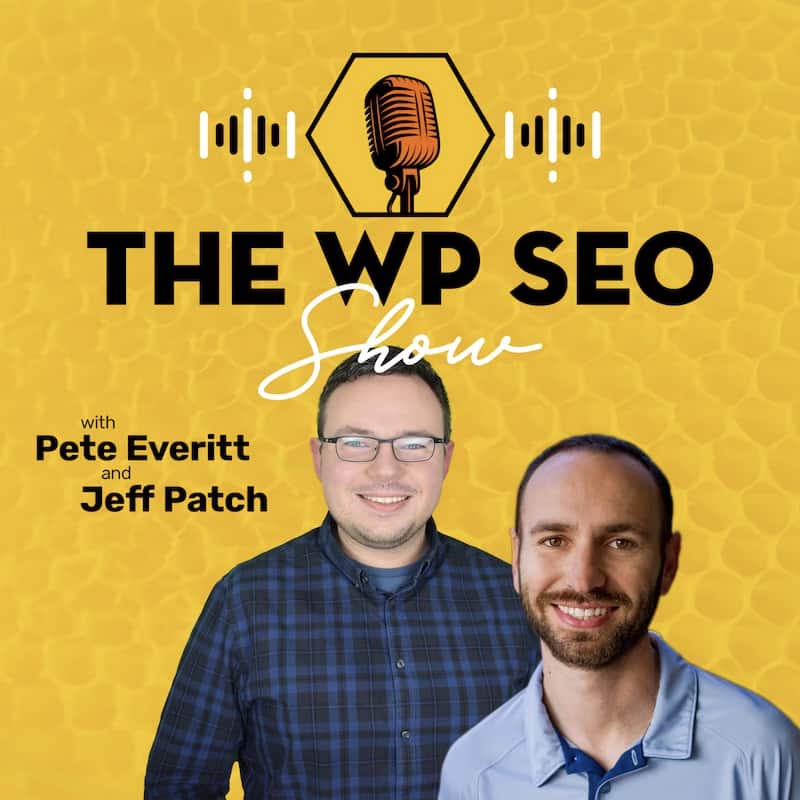People make WordPress websites for a variety of reasons: To start a cooking blog, to promote their small business, to review and rank every type of instant ramen noodles known to man, to develop a portfolio of your artistic work, and so-on.
You have your own reasons, and you’re ready to get your message out.
But with over 455 million WordPress websites in existence today, it’s no surprise if your site gets buried under a mass of pages like and unlike it. After all, it’s not just everyday folks who employ WordPress to power their grind. Industry giants like The Walt Disney Company, Sony Music, Reuters, PlayStation, and TechCrunch all use this content management system (CMS) to run all or some of their sites.
So, how do you differentiate yourself from this ever-growing crowd of creators and professionals? How do you get more people to find you out there on the ol’ World Wide Web?
When you’re looking to increase traffic on your WordPress site, it’s crucial that you incorporate best practices for SEO, an absolutely necessary strategy that all website owners, designers, and developers must incorporate to boost their pages to Google stardom.
What’s SEO? Asking for a Friend…
SEO stands for search engine optimization, the process by which you enhance the quality and visibility of your online content to make it show up as a top result on search engines. It’s an essential marketing tool for anyone looking to drive more traffic, engagement, exposure, and/or sales towards their website.
SEO’s power is in its ability to connect specific audiences or consumer bases directly to what they’re looking for (and the people who create it).
Say you sell custom-made pajamas for geese online: Would you rather create thousands of flyers and disseminate them around town, hoping they’ll make their way to your ideal consumer? Or, would you rather be the first website that pops up when someone searches “goose pajamas” on Google?
If you’re serious about selling your geese jammies, it’s likely to be the latter. You want to quickly and efficiently target folks who are specifically, openly, and actively looking to buy what you’ve got.
One of the reasons why WordPress is such a popular CMS and platform is because it is SEO-friendly, meaning that it’s incorporated with codes that take care of rudimentary SEO practices right out the gate and offers boatloads of additional SEO plugins, typically for free. With that being said, installing and using WordPress won’t automatically optimize your website, nor does it excuse you from applying growth-driving SEO tactics that will help your content rank.
Getting Started with the Basics
To start, let’s make sure your WordPress site has the right tools, settings, and health to be able to handle your optimization wizardry.
1. Install an SEO-Friendly Theme and Free Plugin
These are your starting tools:
- Theme: Don’t simply use the default theme that WordPress installs with. Instead, choose an SEO-friendly theme that doesn’t come bundled with scripts and plugins you’ll never use, which slows site performance down significantly. If you want to be sure about your choice, use Google’s PageSpeed Insights tool to analyze how quickly your page is loading as well as how optimized it is.
- Plugin: Be sure to install a free plugin that’s essential for improved SEO management. One highly recommended option is SEOPress.
2. Check Your Site’s Health and Visibility Settings
Before tinkering with your website, figure out how it’s doing now. Some questions to ask are:
- What hardware and software is my stuff running on and can it be updated?
- Is my PHP version 7.1 or above?
- Am I using a valid SSL certificate and HTTPS URL?
- What hosting service am I using? Can others, for a marginally higher price, offer me more security, speed, reliability, and discoverability?
In addition to asking these questions, be sure to check for your site’s health and visibility through your WordPress Dashboard.
For the status of your site health, simply access your Dashboard > Tools > Site Health. In addition to getting a general understanding of how your page is running, the tool will also give you an overview of critical issues, recommended improvements, and passed tests.
To make sure your site is ready to be seen by the public, access your Dashboard > Settings > Reading. Make sure that the box that reads “Discourage search engines from indexing this site” is left unchecked and click “Save Changes” before you leave.
3. Links on Links on Links
URL choice is critical to your WordPress site’s SEO. Two things you must take care of are using www vs. non-www URLs and setting up easily readable permalinks.
WWW vs. Non-WWW
Do you want your website’s URL to show up as www.geesejammies.com or geesejamies.com?
You want to clarify this because search engines typically recognize these as two completely different sites. You don’t want to direct your audience to one and have them end up at another.
This is a matter of personal difference and will make little to no difference from an SEO perspective. Think about which version is more “on brand” with your page and then go to Dashboard > Settings > General to mark your preferences within “WordPress Address (URL)” and “Site Address (URL).”
An SEO-Friendly Permalink Structure
WordPress lets you decide how you want to format your page and post URLs.
Think this doesn’t matter? Which of these two look better, both in terms of aesthetic and accessibility?
geesejammies.com/?p=123
geesejammies.com/blog/how-to-size-your-geesejammies
The second choice clearly states the category and title of the post within the URL, which enhances both the quality and relevance of your page in the dead, mechanical eyes of search engines and the bright, living ones of its users.
To optimize your permalinks, admin-access your Dashboard > Settings > Permalinks.
- If you want simply your post name to show up in the URL (i.e., yoursite.com/post-name/), simply select “Post Name” in the settings.
- If you want to also include the category as in the example above, select “Custom Structure” and insert /%category%/%postname%/.
Optimize Your Content
Now, on to the nitty-gritty of SEO magic: Improving the quality and value of what your site brings to the table. Your content has been, is, and will continue to be your website’s ultimate moneymaker.
The recommendations in this section can be applied at varying degrees and their effectiveness will depend on how faithfully you put the work in. While some can be a bit tedious in the beginning, they’re easy to do and, all in all, well worth the effort.
1. Research Most Commonly Used Keywords
You want your site to show up at the top of search engine results—then, it only makes sense that you research the words and phrases your audience uses to find you and then use them in your posts!
Keyword research is essential because the words people search for might not always be intuitive or even broad. This is why it’s important to solidify these two points:
- Long-tail key phrases: These are longer, more specific phrases and terms people use to describe the problem they want solved or the information they want to find. It’s basically the difference between someone searching for “geese pajamas” vs. “how to keep my goose warm at night.” Because the latter key phrase is more specific, it’s easier for your site to rank in this category. It’s all about finding your niche and becoming the go-to expert in it.
- Search intent: This is what your audience is trying to achieve or gain by doing their search. For instance, someone who wants to know “how to keep my goose warm at night” is clearly looking for a solution to a poor, shivering feathered friend. They might then want to go to your site and read an informative blog article that answers this question, which gains their trust and encourages them to purchase your solution, which, of course, are geese jammies.
Keyword research tools are available everywhere online, some of which can be accessed free of charge!
2. Don’t Cannibalize Your Own Content
Keywords and key phrases are great. But going overboard with using the same ones over and over across all of your posts will backfire on you.
Duplicate content confuses search engines by offering multiple URLs with the same or noticeably similar content. Because search engines don’t know how to clearly differentiate between these identical pages, they’ll collectively rank these pages much lower. In other words, you become your own competition and all the different versions of you lose.
As a rule of thumb, focus on a few key phrases per post and research new ones every so often to monitor trends. Develop different titles, subheadings, and content every time, which, if you’re sticking to the rule of thumb, should be relatively easy.
If you must use similar diction and content, be sure to use synonyms for overused words or shift the focus away from the key phrase that’s forcing the duplication and onto related, still interesting key phrases. So, if you’ve already written a post for “how to keep my goose warm at night”, you might naturally transition to “can geese catch colds?”
3. Create an Endless Stream of Content via Internal Linking
So, your initial SEO tactics have worked, and you’re getting serious hits and views on one of your posts. The next step is in figuring out how to keep your visitors’ attention and get them to continue exploring your entire WordPress website.
The easiest way to do this is to create a post with internal links that lead to other pages on your website. That way, your visitor can read about one topic of interest and natural transition to another, thus excavating an entire reservoir of great resources.
You won’t be able to apply this technique until you have at least a handful of posts that have identifiable connections between them. But, once you do, it’s easy sailing from there: All you do is highlight the text that you want to link, add in a hyperlink using %K or the “Link” button on the toolbar, and you’re done!
4. Optimize Your Images
In this final category, let’s talk images: Photos, graphs, infographics, tables, figures, and more. We want at least one piece of media on a page if you want it to rank in the top 10 searches.
Here are some ways to immediately enhance your site’s SEO through your visuals:
- Use specific file names: Rather than simply using an image’s default name (something like /pic1/.jpg), use a simple but specific title that describes what it shows. This will give your search engine more refinement tools to rank your page higher.
- Always add alt text to images: Alt text not only describes images to search engines but it helps visually impaired visitors access your content (and helps you stay out of trouble for accessibility violations). These descriptions don’t have to be fancy or long. We want it to be short, sweet, and specific.
Final Thoughts
WordPress is the most popular CMS in the world for a reason: It sets up a robust and accessible foundation for SEO upon which you can build with a variety of strategies using only a handful of plugins.
The recommendations described here are just starters—there’s an entire, ever-evolving world of SEO tactics available to help your WordPress site stand out and spread your message to a wider audience. So, remain attentive, do your research, and optimize so you can move those fleece geese jammies!







